10 Benefits of Calisthenics Training | Calisthenics vs Weights
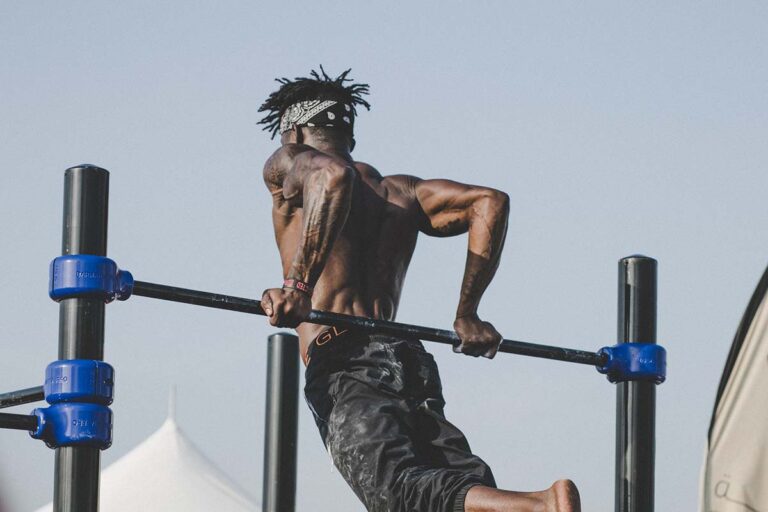
Exercise used to be a simple affair. Long ago, before gym culture blew up and the world was gripped by fitness fever, working out was a lot less complicated than today.
Back then we weren’t so scientific about the whole thing. We didn’t put too much thought into isolating different muscle groups, or the optimal number of reps to perform, or how many grams of protein to eat. We stuck mostly to natural body movements, not much changed since the days of ancient Greece.
But look where we are today. Step into any high-end gym and you’ll find a cornucopia of state-of-the-art fitness contraptions. Cable machines weighing half a ton, designed to isolate one tiny part of your body. Treadmills with more computational power than the Millennium Falcon. Fitness has truly made the jump to light speed.
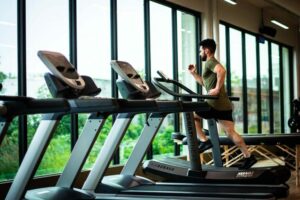
But do we really need all this? Back in the day, exercise may have been a little primitive, but it was natural, no-nonsense and superbly functional. Exercise which is functional – isn’t that the whole point? Unless your only goal is to post pictures of your ass on Instagram, functionality should be at the core of your workout philosophy.
And here’s a secret – when it comes to functional strength training, simplicity works. Because all you really need is the weight of your own body. Body-weight exercises – i.e. calisthenics – is now one of the hottest trends in fitness, part of a bigger trend which is taking us full-circle – back to simplicity and back to nature. And the benefits of calisthenics go way beyond strength training.
Table of Contents
ToggleWhat is calisthenics?
Calisthenics means strength training where the resistance is provided only by the weight of your own body. Which is why it’s called body-weight exercise. Push ups and pull ups are well known, but there are literally thousands of movements and variations ranging from extremely easy to ridiculously hard (try doing a one-armed handstand push up).
This article is about the benefits of calisthenics exercises and why in the contest of calisthenics vs weights, the former is a hard-hitting contender.
Here are 10 amazing benefits of calisthenics training:
#1 Calisthenics is the most natural form of exercise.
The ancient Chinese philosophy of Taoism teaches us to follow our nature, just like water in a stream flows downwards, following its own natural course.
And here is an interesting thought: before we became fully upright and bipedal, our ancestors spent millions of years swinging in the jungle canopies or knuckle-walking the grasslands and forest floors. Swinging, hanging, crawling, leaping, balancing. That’s millions of years of treetop calisthenics and floor-based gymnastic exercise.

When you consider what is the basic blueprint of a human body, you have to think about where we came from and what kind of movements caused us to evolve into our current shape.
Calisthenics is the most natural form of exercise because it’s based on movements we’ve been doing for 60 million years, ever since primates first came on the scene. And exercising your body in a natural way will not just give you the most usable kind of strength but also the kind of body shape which is most pleasing to the eye.
#2 One of the best exercises for functional strength.
Calisthenics uses compound movements, involving lots of different muscle groups working together under tension. This is how your body was meant to be exercised. Think about it. All heroic feats in real life – whether it’s rescuing a cat from a burning building, wrestling a mad bull to the ground, or making sweet love down by the fire – involve many muscles working together in unison. The fact is, doing exercises for functional strength will make you more heroic.
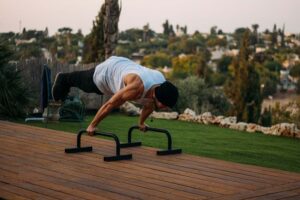
If you want to build whole-body strength, don’t waste your time doing arm-curls. You need to do big movements which force multiple groups of muscles to coordinate, stabilize and transfer power efficiently. This is exactly what calisthenics is all about, and the benefits of this are huge.
Doing body-weight exercises will train your body to work as if it is one muscle. You gain a special kind of functional strength for real life which is harder to get through regular gym exercises.
As an example of the different strength effects of calisthenics vs weights – you may be able to do a massive bench press, but can you do a single one-arm push up? Not so likely.
Weight-lifting (awesome though it is) can be quite one-dimensional in that the direction of movement is usually fixed and there are a relatively small number of muscles involved. In calisthenics vs weight training, calisthenics definitely comes out no.1 for developing real world, functional strength.
#3 Calisthenics will give you a six-pack fast.
 Calisthenics works amazingly well if you want to get a six-pack fast. Let’s compare with ordinary gym workouts – you hit the gym usually with the mindset of working a certain part of your body. Everything is compartmentalized. You have leg days, chest days, ab days, and so on. And to most people, working the abs plays second fiddle to the main events – chest, back, legs and arms. Which is why a truly chiselled set of abs is a rare thing.
Calisthenics works amazingly well if you want to get a six-pack fast. Let’s compare with ordinary gym workouts – you hit the gym usually with the mindset of working a certain part of your body. Everything is compartmentalized. You have leg days, chest days, ab days, and so on. And to most people, working the abs plays second fiddle to the main events – chest, back, legs and arms. Which is why a truly chiselled set of abs is a rare thing.
The beauty of calisthenics is that core training is integrated into every single movement. Whichever bodyweight exercise you do, you will always be lighting up your abs.
Keeping your body aligned during movements engages your core muscles strongly, and not just the Rectus Abdominis (the six-pack muscle). Calisthenics trains your whole core – including lower back, obliques, hips, glutes and all the deeper muscles like the Transversus Abdominis, so important for true core strength.
#4 Calisthenics prevents injury and improves joint stability.
Calisthenics fall mostly into what are known as closed kinetic chain exercises. Which just means that the extremity of your body (either your hand or foot) stays in constant contact with a fixed object. Like with pull ups where your hands remain fixed to the bar, which doesn’t move. As opposed to closed kinetic chain exercises – like leg curls, where the legs and feet move freely.
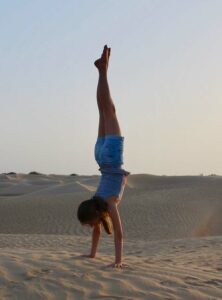 Closed chain exercises are better for physical therapy because they are closer to movements you do in real life, use multiple joints and work many muscle groups together. For this reason, physiotherapists recommend these types of exercises to improve the robustness of your joints or to recover from injury.
Closed chain exercises are better for physical therapy because they are closer to movements you do in real life, use multiple joints and work many muscle groups together. For this reason, physiotherapists recommend these types of exercises to improve the robustness of your joints or to recover from injury.
Also, the incredible balance and alignment demanded by calisthenics exercises builds up strength and stability within your joints, making them bomb-proof. Doing a handstand, you are constantly having to make small adjustments by firing up all the muscles in and around your shoulder joints, as well as support the weight of your body, all within a closed kinetic chain. The result is superbly robust shoulder joints.
#5 Doing bodyweight exercises will get you ripped.
If you want to know what kind of body you can get with calisthenics just look at any professional gymnast’s body. Extremely defined muscles, especially in the arms and shoulders, low body fat, powerful, sleek and beautifully balanced. Professional gymnasts probably have the most well-proportioned bodies of any athlete. And pretty much all they do is calisthenics.
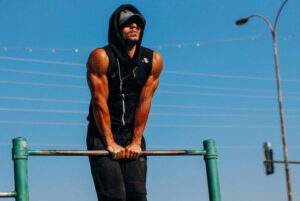
Doing more advanced body-weight exercises like the front lever and planche will build incredible strength, size and definition in your entire upper body and core. The key thing is that all the exercises are multi-joint, compound movements which force several large muscle groups to work in coordination. By training in this way you’ll develop a beautifully proportioned athletic physique, not the ungainly and slightly grotesque body of your typical gym meathead.
Another benefit of calisthenics is that the exercises are fairly quick-recovery. So, in a typical workout (done properly) you’ll be doing a very large volume of exercises with only short rests between each one. Unlike lifting heavy weights where you need a long recovery between sets. This means you’ll burn a ton of calories and fat, which over time will give you a nicely shredded physique.
#6 Calisthenics is cardio and strength rolled into one.
Calisthenics can give you an awesome aerobic workout if you do it in the right way. Well, of course, there’s never a single “right way” to do anything, but if you specifically want to improve your aerobic fitness, doing circuits of body-weight exercises is an excellent way to train aerobically.

My favorite is to pick 4-6 exercises and just do them one after the other with only short rests (30-40 secs) between. Use a countdown timer for the rest periods and be strict with yourself – as soon as the alarm goes off you have to start the next exercise, no matter how tired you are. The key thing is that each exercise should focus on different muscle groups than the previous one, for example alternating between push and pull movements.
Here’s a sample workout:
Clap Push Ups > Inverted Rows > Dips > Strict Pull Ups > Tuck Planche > Front Lever. As many circuits as possible (try to do at least five).
Switching between different muscle groups like this lets you keep doing the circuit with minimum rest. Your heart will be pumping like mad, you’ll gasp for air and your sweat will run in great rivers. Working out in this way will give a huge boost to your cardiovascular fitness and endurance, and at the same time make you strong and muscular. Two birds with one brick.
#7 Doing calisthenics will give you the discipline of a samurai.
When you work out, you never just exercise your muscles. You’re training and improving your whole mind-set, your attitude to life and your all-important sense of discipline. Through training the body, you can forge an indomitable spirit and iron will. And it doesn’t matter whether you do calisthenics or karate, rugby or rollerblading, as long as you’re willing to sweat and make sacrifices. The ways are many but the goal is one.
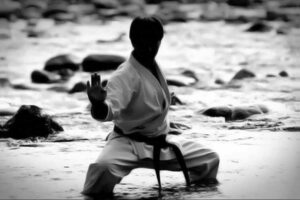
However, when we’re talking about weights vs calisthenics, and which one is better for improving your discipline and ability to smash through barriers and achieve your goals in life, I do believe calisthenics has an edge.
This reason is this: when you start weightlifting for the very first time, you can immediately do all the exercises. From day 1, you can do bench presses, lat pulldowns, rows, leg presses etc. You may have to start very light, but you can still do the movements straightaway.
With calisthenics, the opposite is true. No-one ever managed to do a full planche on their first try. No beginner ever pulled off a perfect front lever or a muscle up. These moves start off as distant goals, something to be achieved through a long and grueling training process. And although there are tools, like calisthenics resistance bands, to help you on the way, you mainly rely on sweat and elbow grease. But stick the course and the payoff is amazing.
Calisthenics training is like a series of steps towards becoming superhuman. And each time you hit a new goal, a new move which you previously thought impossible, you become something more than you were before. The process of achieving new goals and pushing through your limitations gives you a kind of discipline which will filter down into every aspect of your life.
#8 The best strength exercise to combat aging.
I’m 38 years old as I write this. Not exactly due for a hip replacement yet, but I know my body is not the same as when I was 24. I get injured more easily from strength training – usually just annoying aches and pains in my joints which can take weeks to heal.
One of the most important training rules is to listen to your body. If you’re having the same problems again and again, it means something is wrong and you need to change. Which why I moved from exclusively using free weights to now doing about 80% calisthenics, 20% free weights.
The difference has been amazing. I no longer get the aches and pains, my joints feel solid and robust, and I’m more shredded than ever.
Doing calisthenics is one of the best ways to combat aging because the areas where it helps the most – core stability, joint strength, posture and balance – are exactly the things which decline with age and cause problems. I want to keep my active lifestyle when I’m well into my 80s, and I believe calisthenics will be very beneficial with that.
#9 The world is your gym.
I love going to the gym. Getting into a space which is completely geared up for exercise and where everyone else is there for the same reason, just puts me into the zone. I’ve had some epic workouts in the gym.
But I also love the idea of being able to work out anywhere, anytime, for free. Why should you be limited in where you can workout? Exercising wherever and whenever you want is a feeling of pure freedom. One of the biggest benefits of calisthenics training is that you can do it anywhere.
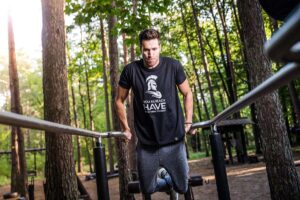
Although for doing calisthenics at home it’s useful to buy yourself a pull up bar, parallel bars and a pair of parallettes, you’re far better off going to a park which has calisthenics equipment set up. Open air exercise is good for the soul and won’t cost you a penny.
You can even use a table and chair to do movements like inverse rows, dips and incline push ups. Useful if you ever find yourself in a hotel room with time to kill. Or in a jail cell doing consecutive life sentences.
#10 Variety is the spice of life.
I’m not here trying to tell you that you should only do calisthenics and never touch a barbell again in your life. That would be silly. I still love doing weights, and I always will.
But it’s known that doing the same workout routine all the time has two negative effects. One is that you will get bored easily. Humans need variety to maintain interest. And the other is that your muscle adaptation will stagnate.
Research has shown that adding variety to your workout plan will keep you interested and help you stick to it over the long term. One of the biggest benefits of calisthenics is that doing body-weight movements in addition to your normal weights exercises is a nice way to vary things and stay interested.
This is doubly true with calisthenics because you’re varying not just the movements but also the workout location – you’re extending your workout space from the gym into the parks, forests, streets and downstairs bedrooms.
And then there’s the function of the exercises themselves. The forces they exert on your body and the way they make your muscles work is so different from regular weight training. Alternating free weights with calisthenics, and maybe throwing in some resistance band work, will give you a superbly varied workout regime.
Final word.
I’m not here as a promoter for calisthenics. And certainly I’m no expert myself (I’m still a long way from achieving a full planche). I’m just someone who’s been working out for many years and recently decided to mix things up a bit. I’ve already felt the benefits of calisthenics and really hope you can too. Get going!
Subscribe to our Instagram and YouTube channels for exercise videos like this back workout:

